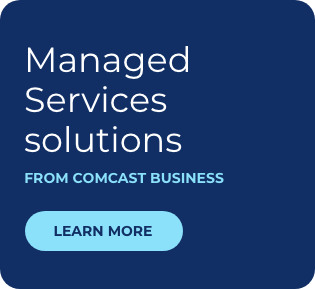Uniting Managed SASE and Connectivity for Scalable Networking and Security

First coined by Gartner and then quickly launched into the spotlight by the rapid shift to remote work during the COVID-19 pandemic, Secure Access Service Edge (SASE) has established itself as a pivotal framework for enterprise networks. It represents a holistic approach to networking and security, aiming to provide secure, fast, and reliable access to applications and services from anywhere.
SASE is a framework that delivers converged network and security capabilities as a cloud-based service. The core components of SASE include:
SD-WAN: Software-defined wide area networking to connect users, locations, and cloud resources
Firewall as a Service: Next-generation Firewall for network traffic inspection and security
Cloud Access Security Broker (CASB): To secure access to cloud applications
Zero Trust Network Access (ZTNA): Verifies users and devices before granting access
Secure Web Gateway (SWG): On-premise or cloud-based Internet traffic filtering
SASE adoption has skyrocketed since its inception five years ago, with a recent Gartner survey indicating that 39% of technology leaders have deployed or will deploy SASE within the next 24 months. But implementing and managing a SASE architecture can be an operational challenge. Research shows that enterprise organizations are increasingly turning to managed service providers (MSPs) to handle SASE deployment and ongoing support. In fact, the number of companies relying both on in-house resources and external MSP partners for SASE implementation recently jumped significantly (from 48% to 67%) from 2022 to 2023.
Advantages of single-vendor SASE from a connectivity provider
Opting for a single-vendor SASE solution—in which one vendor provides all elements of a SASE framework—can substantially reduce complexity and mitigate interoperability and compatibility issues. By working with a single MSP partner, enterprise technology leaders can not only simplify management but have a single point of contact.
Connectivity providers can elevate the value of a single-vendor SASE solution a step further by combining network delivery circuits with SASE components. With extensive experience as MSPs and rich capabilities in networking and security, connectivity providers are capable of delivering unified solutions that can be scaled and customized according to enterprise needs.
Key advantages include:
Converged security and connectivity: By blending SD-WAN connectivity and advanced security in a managed services offering, enterprise organizations can manage deployment costs and cost of ownership.
Simplified management: With networking, security, and connectivity all sourced through a one provider, organizations get closer to a single pane of glass for managing their entire network environment.
Better agility: Networking and delivery can be scaled simultaneously while helping to maintain a secure environment, while the solution can keep pace with evolving business demands. Delivery can also be optimized to align more closely with varying application demands throughout the network.
One-stop shop: Everything an organization needs to supply, power, and help protect their network environment is available through a single point of contact.
MSP expertise: Large connectivity providers are also MSPs. Research shows organizations are increasingly looking to partner with MSPs for SASE deployments, helping to address labor and skills gaps with dedicated MSP teams.
In short, enterprises are able to get a more tightly integrated and streamlined solution that enhances management, agility, and customization—all without the constraints of in-house management or traditional OEM-delivered offerings. As SASE continues to grow in importance for business transitioning to the cloud and supporting hybrid work models, the connectivity provider model represents a differentiated approach that addresses key operational challenges.
To learn more about how Comcast Business helps enterprise organizations propel their digital transformation efforts with global secure networking solutions, click here.
Learn about the advantages of single-vendor SASE from a connectivity provider.
Locked Content
Click on the button below to get access
Unlock NowOr sign in to access all content on Comcast Business Community
Learn how Comcast Business can help
keep you ready for what's next.










